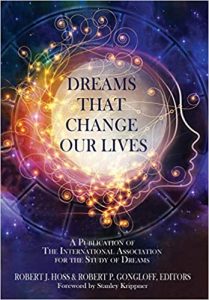- The Psychology of Dreaming by Robert J. Hoss, MS
- Part #2 The Psychology of Dreaming Contents
- Section 5 Psychological Theories …..1
- Section 6 The Nature of Dream Imagery…. 23
- Section 7 Dreamwork…. 32
- References…. 52n
- Part #2 The Psychology of Dreaming Contents
Introduction
We meet ourselves in our dreams. Our dreams are more than simply a reflection of our waking life but rather an encounter with all the parts of ourselves that have been affected by the emotional impact that our waking life situation has had on us. Furthermore, our dreams attempt to resolve not only the problem at hand, but underlying emotional conflicts and/or lifelong dysfunctional patterns that leave us stuck. We learn in dreams and thus ever so slightly change our perception or attitudes about ourselves and life. As Robert Stickgold (2009) stated, “When you wake, you understand how the world works better than when you went to bed.”
In this section I will discuss some of the psychological principles involved in that encounter and resolution process, from the viewpoint of some of the great psychologists and luminaries who have pioneered contemporary dream theory and dreamwork. The Nature of Dream Imagery is developed from the theories and practices of Jung, Perls, Hartmann and other great thinkers and research into the significance of color in “painting or dreams with emotion.” Finally individual and group dreamwork principles and ethics as well a Transformative Dreamwork protocol will be presented which integrates the practices of multiple proven approaches into a 3 part protocol which involves exploring: the associations within the narrative, underlying emotions within imagery and how the dream attempts resolution (a final closure and action phase).
[READ MORE – to read the complete section on the Psychology of Dreaming click on Psychology of Dreaming]






